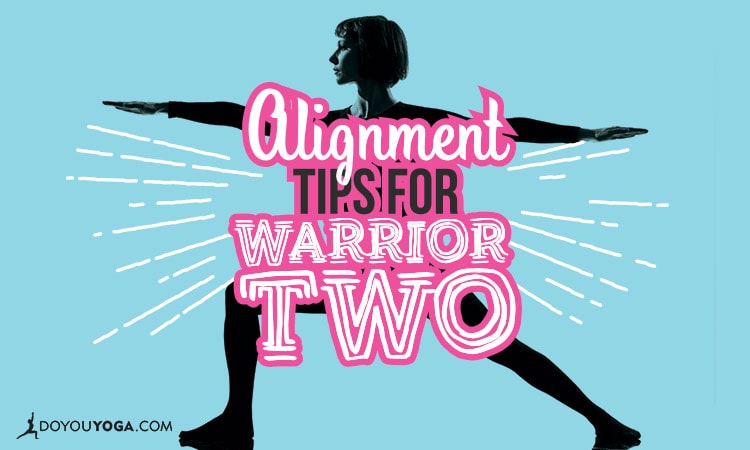It’s wildly popular in most forms of yoga, but does the iconic Warrior 2 (Virabhadrasana II ) warrant all the hype? I say YES! It’s considered a beginner level pose, though it offers a challenge for yogis of all levels. And when we practice with integral alignment, we can enhance the awesome physical and energetic benefits.
Physically, you’re opening through hips and groin and building heat and strength, particularly in the legs. Energetically it works to balance our root chakra Muladhara which can help soothe our emotions and enhance feelings of grounding and stability. And as a total bonus, it can be extremely useful in stilling a busy fluctuating mind. So let’s check it out.
1. Set the foundation with a wide stance.
In flowing or dynamic forms of yoga, it’s common to open up from Warrior 1 to Warrior 2, but the stance in Warrior 2 is actually a bit wider. I find the best way to measure the placement of the feet is to stand facing the long edge of your mat and step the legs wide apart.
With your arms out to the side at shoulder height, your feet should be underneath your wrists.
Note: I have abnormally long arms, so I realise this is more of a guide than an exact science. I’ll revisit the stance in a moment when we get to the front thigh.
2. Set up the feet.
We’ll look at this as though we’re working on the right side first. Turn the toes 90 degrees towards the right so they're facing the short edge of the mat, and the back toes are turned in slightly.
The heel of your front foot should align to the middle of the arch of your back foot, and you want to make sure the outside edge and the heel of your back foot are firmly connected with the mat. Lift up through the inner arches of both feet.
3. Front knee.
The front knee is bent and ideally stacked directly over the ankle though if your groin/hips are really tight, it may not quite reach that depth. You don’t want the knee in front of the ankle. You also want to align the knee so it’s tracking over the second and middle toe.
4. Front thigh parallel to the floor.
If you’re tight in the groin (common for beginners), and if you’re still building strength in the thighs, this might be a little too challenging…but it’s good to know this is where you’re headed.
As per the first point, we need a wide enough stance in order to get our thigh parallel so you might need to adjust your base slightly to get the right depth.
5. Shoulders over the hips.
The arms are out wide at shoulder height and you’re reaching equally forward and back with both hands. It’s super common to lean too far forward in this pose, usually because the mind wants to “go somewhere,” so you may need to consciously align the shoulders over the hips and resist the urge to escape…
6. Tailbone lengthens down towards the mat.
To maintain a lovely long spine, feel the tailbone lengthen down while the crown draws up to the sky. And if you’re in the market for a bit of grounding, this is the perfect pose to form a connection with the earth. Imagine there’s a beam of light running down through your body, connecting your tailbone with the ground beneath you.
Bask in those feelings for a few moments. That connection can go all the way to the earth’s core if you need really intense levels of stability (like I often do when I am travelling).
7. Heart is open and light.
I know I say this in pretty much every pose I give tips on, but the fact is, if we consciously feel light around the heart, the result is lightheartedness. With the arms out wide, the chest is open and broad, leaving tons of space for your light and inner beauty to shine forward. Encourage that with open arms! Literally.
8. Focus your gaze.
Traditionally the gaze is over the middle finger of the front hand, but obviously be mindful of your neck and work appropriately. In Sanskrit it’s called finding your drishti, a focal point for your eyes which helps to still and relax the mind through concentration on a single point.
9. Maintain smooth, even breaths.
Be really conscious of the breathing process in this pose because it’s really easy for it to become short and ragged. Smooth, even breaths will help you stay calm which will be particularly useful if the mind starts to get agitated by the physical challenge.
Though it’s known as Warrior 2, Virabhara also translates as Blessed Hero. When I practice, I like to consider both qualities of a warrior (strength and determination) and a blessed hero (willingness and humility).
This brings a sense of lightness to my attitude and balances out the strength. Whichever way you look at it, it’s worth spending time on this pose as it will likely play a key role in your long term asana practice. So, what are your thoughts on Warrior 2?


